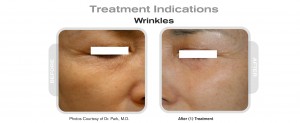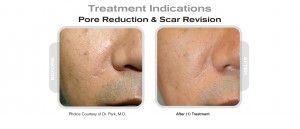Post-Treatment Recommendations
After each treatment session, the physician should advise the patient on proper care:
- Emollient cream should be applied to the treatment area immediately post treatment.
- Cooling the skin can reduce discomfort.
- Antibiotics may be prescribed if infection is suspected or as a prophylactic measure. Patient is to contact the physician if there is any indication of infection, excessive swelling, redness, undue pain or any other unusual or untoward symptom.
- Occlusive dressing like Vaseline or Aquaphor may be used instead of following antibiotic ointment.
- A prophylactic antiviral medication should be prescribed to patients with a history of cold sores (Herpes Simplex) when treating around the mouth and lips.
- Blisters may be treated with a prescribed antibiotic ointment or burn treatment cream as per physician’s discretion.
- During the first two days following treatment, the skin should be kept clean to avoid contamination or infection; any mechanical or thermal damage to the area must be avoided.
- Moisturizer may be applied 24 – 72 hours post-treatment and then should be applied regularly throughout the course of the treatment.
- Make-up may be applied 24 – 72 hours after each treatment session. When using higher energy treatments, avoid makeup for several days. Generally 24 hours after treatment, patients may use regular soaps, but not scrub soaps or exfoliants to remove makeup.
- The patient should use a high-factor sunscreen (at least 30 SPF) and protect the treated area from over-exposure to sunlight for at least one month after the treatment, starting 24 – 72 hours post-treatment. Excessive tanning of any sort (sun exposure, tanning beds and artificial tanning lotions) should not be allowed in the treated areas during the entire course of the treatment.
- For skin types IV and light V, bleaching ointment should be prescribed for 6 – 12 weeks, 23 times a week following healing of the treatment area (2 days after crusting gone, typically 7 days post-treatment) to minimize risk of post inflammatory hyperpigmentation. Bleaching product use should be stopped 48 – 72 hours before another iFRAX Fractional RF session.
Erythema and edema post-treatment may mask the results for 2 – 3 days. Final results include tightening by remodeled collagen are established after 6 – 12 weeks or more. The healing process varies between individuals but may include:
- Pain and discomfort for a few hours.
- Strong erythema for a few hours.
- Bruising and/or redness for 2 – 4 days or more.
- Substantial edema for 1 week.
Treatment Results/Before and After Photos
Shortly after treatme nt there is moderate skin erythema and edema in the treated zone, which generally resolves within 1 – 3 days. In the dermis, treatment induces remodeling of dermal collagen (neocollagenesis) and of other matrix molecules, leading to dermal renewal. Erythema and edema post-treatment may mask the results for 2 – 3 days. Final results include tightening by remodeled collagen are typically established after 6 – 12 weeks or more.
nt there is moderate skin erythema and edema in the treated zone, which generally resolves within 1 – 3 days. In the dermis, treatment induces remodeling of dermal collagen (neocollagenesis) and of other matrix molecules, leading to dermal renewal. Erythema and edema post-treatment may mask the results for 2 – 3 days. Final results include tightening by remodeled collagen are typically established after 6 – 12 weeks or more.
 The healing process varies between individuals but may include:
The healing process varies between individuals but may include:
- Pain and discomfort for a few hours.
- Strong erythema for a few hours.
- Bruising and/or redness for 2 – 4 days or more.
- Substantial edema for 1 – 3 days.
